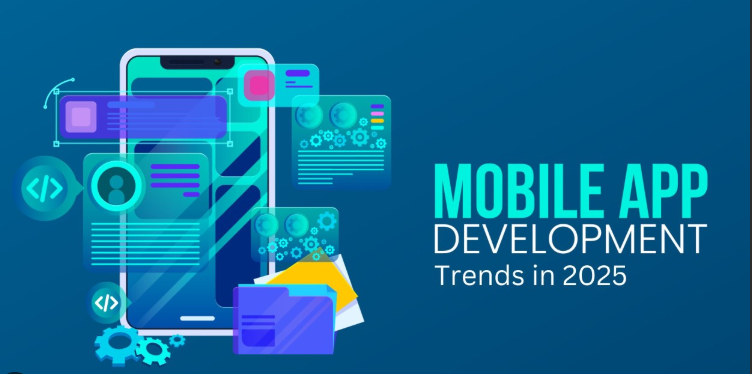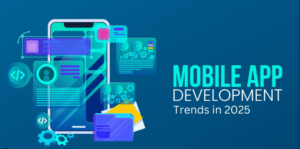Mobile App Development Trends in 2025: What’s Shaping the Future of Mobile Innovation
In 2025, mobile app development continues to evolve faster than ever. With artificial intelligence, augmented reality, and cross-platform frameworks advancing rapidly, developers and businesses must adapt to new standards to stay competitive. This article explores the most important mobile app development trends in 2025, helping you understand what technologies and strategies will define the mobile experience in the coming years.
The Rise of AI-Powered Applications
Artificial Intelligence (AI) has become a core element in app development. In 2025, almost every successful app integrates some form of AI—whether it’s personalized recommendations, voice recognition, or predictive analytics.
Examples of AI in mobile apps include:
-
Personalized user experiences: Apps like fitness trackers or shopping platforms now analyze behavior to deliver tailored suggestions.
-
Chatbots and virtual assistants: Businesses use AI-driven bots to improve customer service and reduce support costs.
-
Image and voice recognition: Healthcare, finance, and retail apps use AI to process images, detect fraud, or translate speech in real time.
AI integration not only enhances user engagement but also helps developers collect valuable insights to improve future updates.
Cross-Platform Development Dominance
In 2025, businesses no longer want to build separate apps for Android and iOS. Cross-platform development has become the preferred approach thanks to frameworks like Flutter, React Native, and Kotlin Multiplatform.
Key benefits:
-
Faster development and lower costs.
-
Consistent user experience across platforms.
-
Easier maintenance and updates.
| Framework | Primary Advantage | Ideal For |
|---|---|---|
| Flutter | High performance, native-like UI | Startups and MVPs |
| React Native | Large community and flexibility | Complex, scalable apps |
| Kotlin Multiplatform | Seamless Kotlin integration | Enterprise-level projects |
This trend allows developers to focus more on innovation rather than managing multiple codebases.
5G Technology Transforming App Performance
The rollout of 5G networks across the world has unlocked new opportunities for mobile app developers. Faster connectivity means smoother performance, higher-quality streaming, and more interactive user experiences.
How 5G is changing mobile app development in 2025:
-
Real-time data processing: Enables advanced AR/VR applications and cloud gaming.
-
Reduced latency: Improves responsiveness in online collaboration and communication apps.
-
Enhanced IoT integration: Apps can now connect and control smart devices with minimal delay.
With 5G, developers are no longer limited by bandwidth, paving the way for richer, more immersive applications.
Progressive Web Apps (PWAs) Gaining Ground
Another important mobile app development trend in 2025 is the rise of Progressive Web Apps. PWAs combine the best of websites and native apps—offering fast loading speeds, offline access, and no need for app store installation.
Advantages of PWAs:
-
Lightweight and faster to build.
-
Accessible on any device or browser.
-
Reduced development costs.
Companies like Twitter and Starbucks already use PWAs to deliver seamless user experiences without the friction of traditional downloads.
Augmented and Virtual Reality (AR & VR) Integration
AR and VR are no longer limited to gaming. In 2025, they’re shaping industries such as education, healthcare, real estate, and e-commerce.
Examples of AR/VR applications:
-
Education: Virtual classrooms with immersive lessons.
-
E-commerce: “Try before you buy” features for fashion and home décor.
-
Healthcare: Remote surgeries and 3D visualizations of anatomy.
With the support of powerful mobile processors and 5G, AR/VR apps now deliver smoother and more realistic experiences than ever before.
Enhanced Mobile Security and Privacy
As mobile apps collect more user data, security has become a major concern. In 2025, developers are focusing on privacy-first design and compliance with global data protection laws.
Modern app security practices include:
-
Biometric authentication (fingerprint, facial recognition).
-
End-to-end encryption for communication.
-
Compliance with GDPR and other privacy standards.
Users now expect transparency and control over how their information is used, making secure development a top priority.
Low-Code and No-Code Development Expanding
Businesses want to launch apps faster, even without deep technical knowledge. This has led to the popularity of low-code and no-code development platforms, which allow creators to build functional apps using drag-and-drop interfaces.
While these tools don’t replace professional developers entirely, they are excellent for prototyping, internal tools, or testing new ideas quickly.
Wearable and IoT App Integration
The growing adoption of wearable devices and Internet of Things (IoT) products continues to influence mobile app development.
Trends in 2025:
-
Health and fitness apps syncing with smartwatches and medical sensors.
-
Smart home apps offering real-time control over appliances.
-
Data-sharing ecosystems between devices to enhance lifestyle efficiency.
This interconnected environment drives developers to create apps that seamlessly integrate with multiple devices.
Sustainability and Energy-Efficient Apps
Sustainability is now part of mobile design philosophy. Developers are optimizing apps to consume less battery, data, and storage—reducing their environmental footprint.
Sustainable development strategies:
-
Dark mode to save energy on OLED screens.
-
Efficient coding to minimize background activity.
-
Cloud-based storage to reduce device load.
As users become more eco-conscious, energy-efficient apps are gaining popularity.
The year 2025 marks a turning point in mobile app innovation. Mobile app development trends such as AI, 5G, AR/VR, cross-platform frameworks, and enhanced security are redefining how apps are built and experienced.
To stay ahead, developers must focus on creating smarter, faster, and more secure applications that truly meet user needs. Embracing these trends not only boosts competitiveness but also ensures your app remains relevant in an ever-evolving digital landscape.














Post Comment